Translate this page into:
“Attaching crimpable hooks: An easy way out”
Address for correspondence: Dr. Sushma Shenoy, Department of Orthodontics and Dentofacial Orthopedics, Sardar Patel Postgraduate Institute of Dental and Medical Sciences, Lucknow, Uttar Pradesh, India. E-mail: sushmashenoy_19@hotmail.com
This article was originally published by Wolters Kluwer and was migrated to Scientific Scholar after the change of Publisher.
Abstract
With the advent of pre-adjusted edgewise orthodontic bracket systems, archwire fabrication has been considerably simplified. Archwires that are devoid of any loops or customizing bends can be utilized. These include fabricated tie-back loops, soldered brass hooks, pre-posted archwires and crimpable archwire hooks. Soldering requires chairside or laboratory equipment, is time consuming and may lead to annealing of the archwire. Crimpable archwire attachment allows quick and simple placement of the attachment in any desired position along the archwire in or out of the mouth. This clinical pearl aims at showing an easy and effective method of crimpable hook attachment without any compromise on arch wire properties.
Keywords
Stainless steel
crimpable hooks
composite
Retraction mechanics is an anteroposterior therapy used to close spaces, correct procumbency, and reduce the overjet. En masse retraction methods usually employ crimpable hooks between the lateral and canine on arch wires as means of attachment for retraction.
Although crimping of hooks on arch wires is less time consuming and easier for the clinician, they usually pose a problem of getting loosened along the arch wire. This can be an obstacle during retraction and is overcome by many clinicians by crimping the hooks with heavy force or by spot welding the hook to the wire. Crimping of the hooks with heavy force can cause the wire to distort[1] and spot welding or soldering can result in annealing of the wire due to the heat produced compromising the wire properties.[2]Furthermore, pre posted wires have an increased cost and require large inventory.[3]
This clinical pearl aims at showing an easy and effective method of crimpable hook attachment without the above mentioned side effects.
Steps of the procedure:
Mark the area in the arch wire to be crimped after confirming the distance intraorally [Figure 1a] and sandblast the marked area using a micro sand blaster. [Figure 1b].
 Figure 1a
Figure 1a- Marking of arch wire
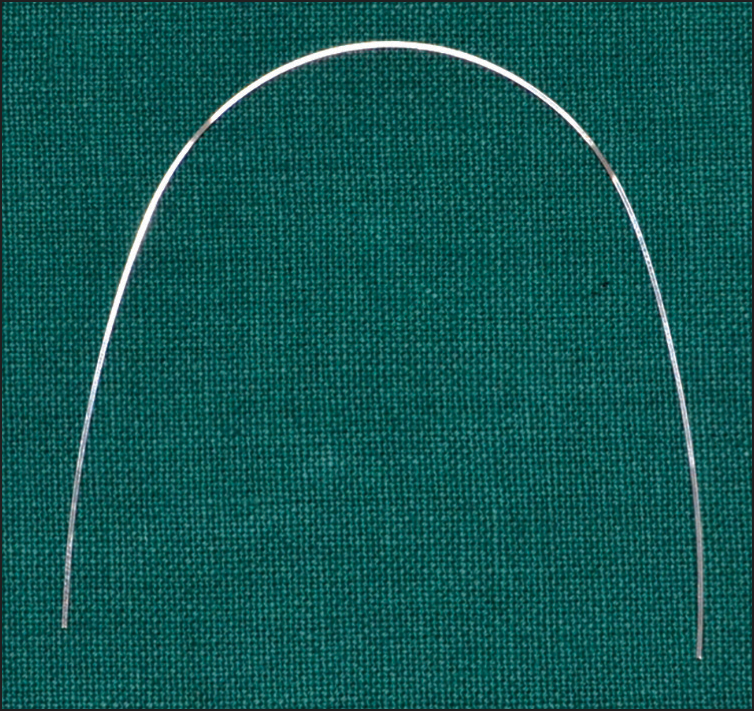 Figure 1b
Figure 1b- Marked area sandblasted
Place a small bead of bonding composite material into the slot of the crimpable hook [Figure 1c] and crimp it on to the wire [Figure 1d].
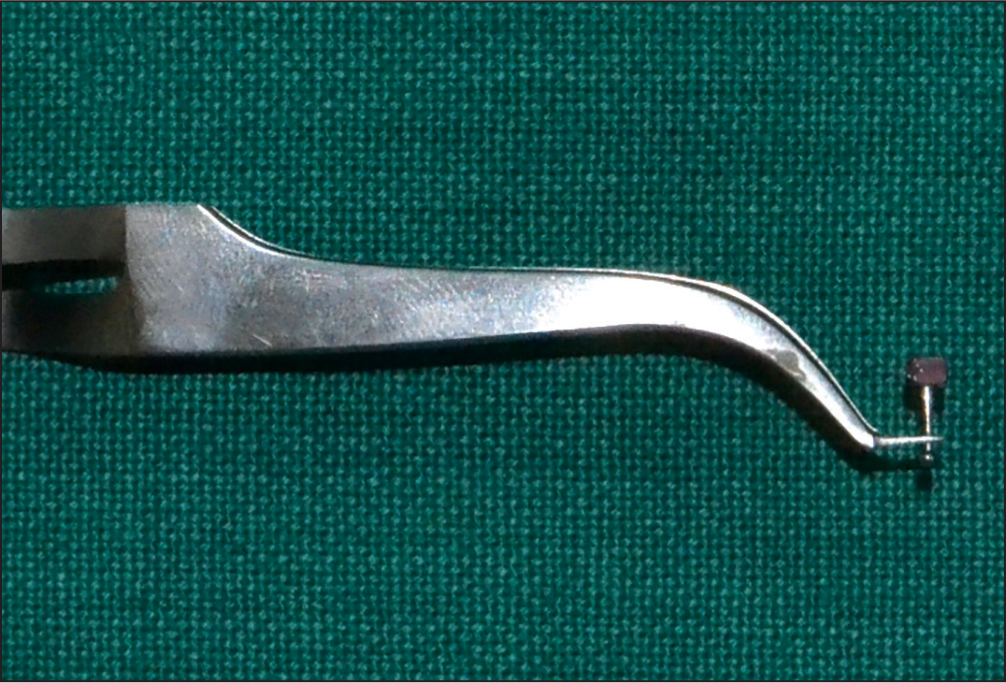 Figure 1c
Figure 1c- Composite applied within hook slot
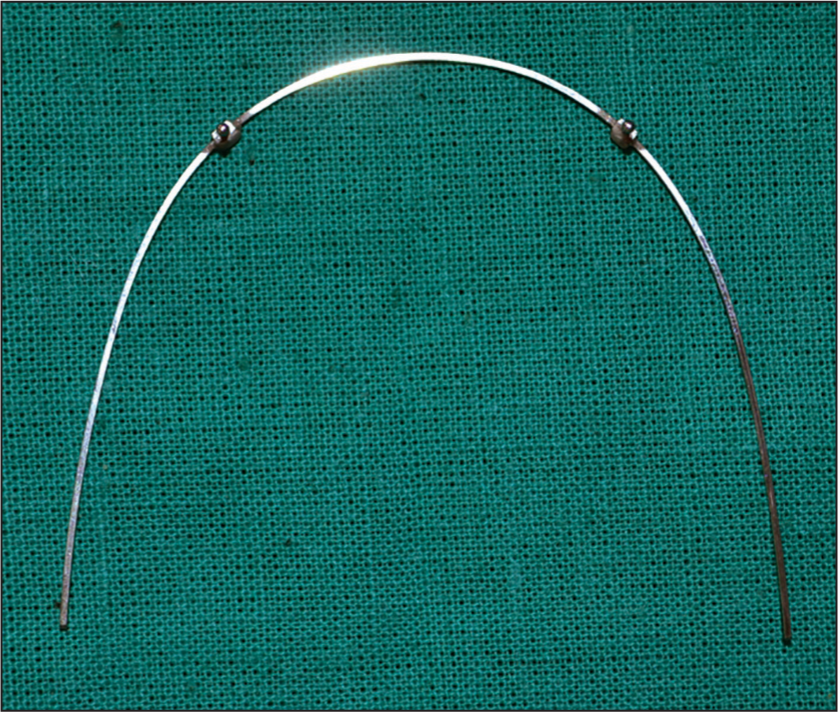 Figure 1d
Figure 1d- Hook crimped on to arch wire
Remove the excess flash and light cure it for 30 to 40 seconds.
Transfer the arch wire into the mouth [Figure 1e] and retraction can be commenced [Figure 1f].
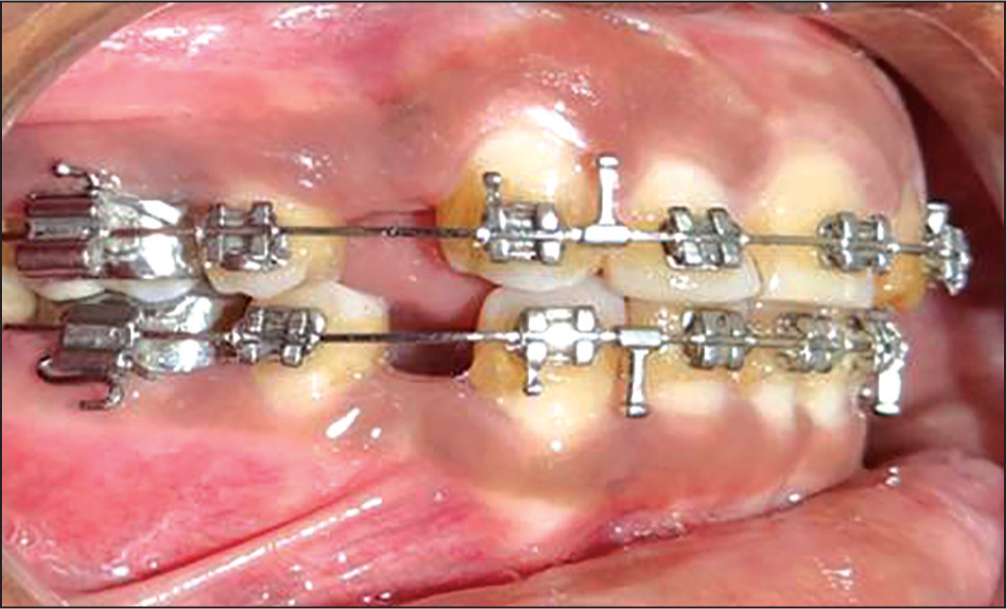 Figure 1e
Figure 1e- Archwire placed in the oral cavity
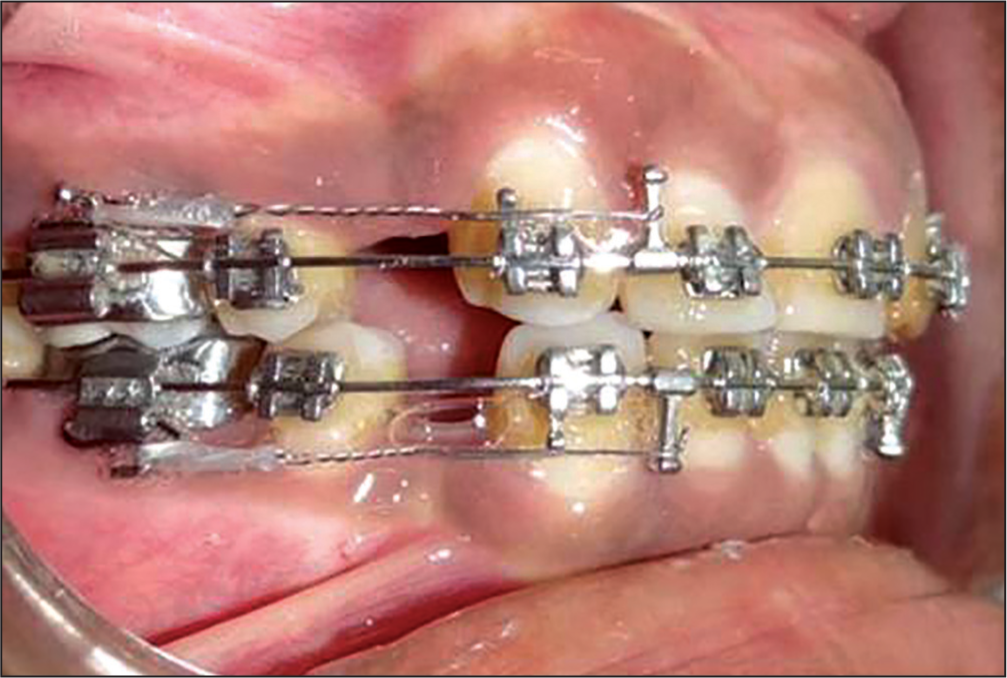 Figure 1f
Figure 1f- Retraction commenced
This chairside procedure can be used as an effective and relatively easy method during en masse retraction without any compromise on arch wire properties.
Source of Support:
Nil.
Conflict of Interest:
None declared.
References
- A laboratory evaluation of surgical ball hook crimping pliers. Int J Adult Orthodon Orthognath Surg. 1991;6:57-60.
- [Google Scholar]
- Tensile and shear strength measurements on brazed “T” joints used in construction of intra and intermaxillary hooks. Br J Orthod. 1982;9:185-9.
- [Google Scholar]
- Properties of crimpable arch hooks: A laboratory investigation. Eur J Orthod. 1999;21:679-83.
- [Google Scholar]






